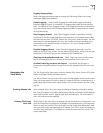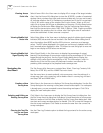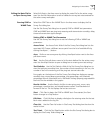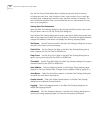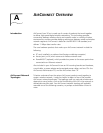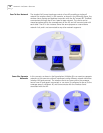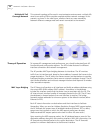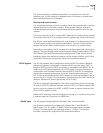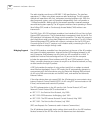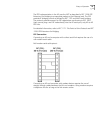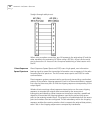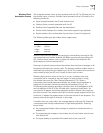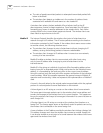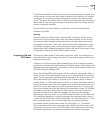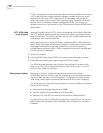
Theory of Operation 21
The AP removes from its database destinations or interfaces not used for a
specified time. The AP refreshes its database when it transmits or receives data
from these destinations and interfaces.
Filtering and Access Control
The AP provides facilities to limit the wireless clients that associate with it and the
data packets that can forward through it. Filters provide network security or
improve performance by eliminating broadcast/multicast packets from the radio
network.
The
Access Control List
(ACL) contains MAC addresses for wireless clients allowed
to associate with the AP. This provides security by preventing unauthorized access.
The AP also uses a
disallowed address
list of destinations. This feature prevents the
AP from communicating with specified destinations. This can include network
devices that do not require communication with the AP or its wireless clients.
Depending on the setting, the AP can keep a list of frame types that it forwards or
discards. The
Type Filtering
option prevents specific frames (indicated by the 16-bit
DIX Ethernet Type field) from being processed by the AP. These include certain
broadcast frames from devices unimportant to the wireless LAN but which utilize
bandwidth. Filtering out unnecessary frames also improve throughput.
DHCP Support
The AP uses
Dynamic Host Configuration Protocol
(DHCP) to obtain a leased IP
address and network configuration information from a remote server. DHCP is
based on BOOTP protocol. DHCP can coexist or interoperate with BOOTP. An AP
sends out a
DHCP request
searching for a
DHCP server
to acquire the network
configuration and firmware filenames. Because BOOTP and DHCP interoperate,
the one that responds first becomes the server that allocates information. The
DHCP client automatically sends a DHCP request to renew the IP address lease as
long as the AP is running. (This parameter is programmed at the DHCP server. For
example, Windows NT servers typically are set for 3 days.)
The AP can optionally download two files when a boot takes place, the firmware
file and an HTML file, because firmware versions 4.00-31 and above support Web
servers. Users can program the DHCP or BOOTP server to transfer these two files
when a DHCP request is made.
When the AP receives a network configuration change or is not able to renew the
IP address lease the AP sends out an SNMP trap.
Media Types
The AP supports bridging between Ethernet, radio, and serial media.
The
Ethernet interface
fully complies with Ethernet Rev. 2 and IEEE 802.3
specifications. The AP supports 10BASE-T wired connections and full-speed
filtering. The data transfer rate over radio waves is 11 Mbps. The Ethernet
interface is optional for single-cell or PPP-connected networks.



